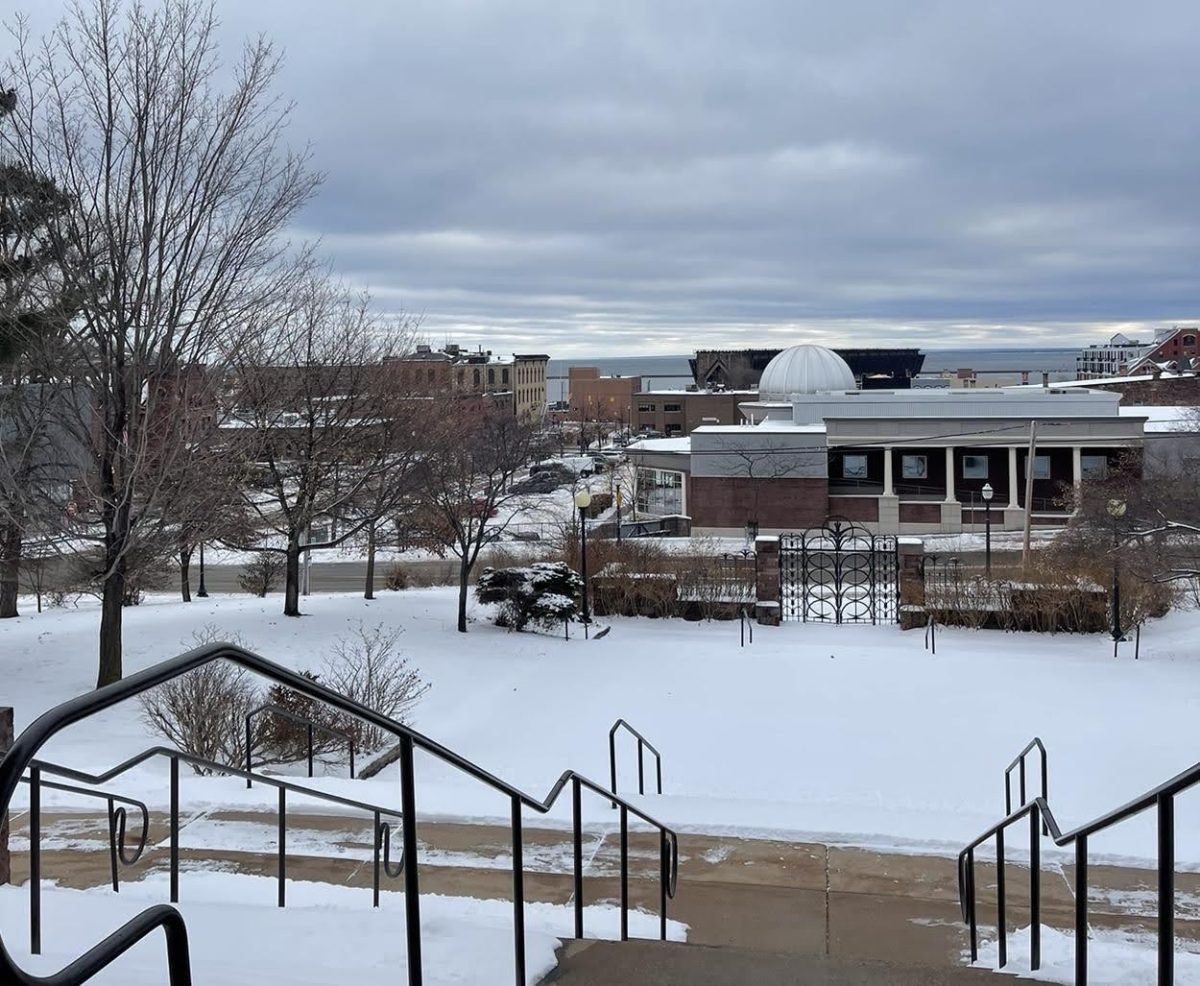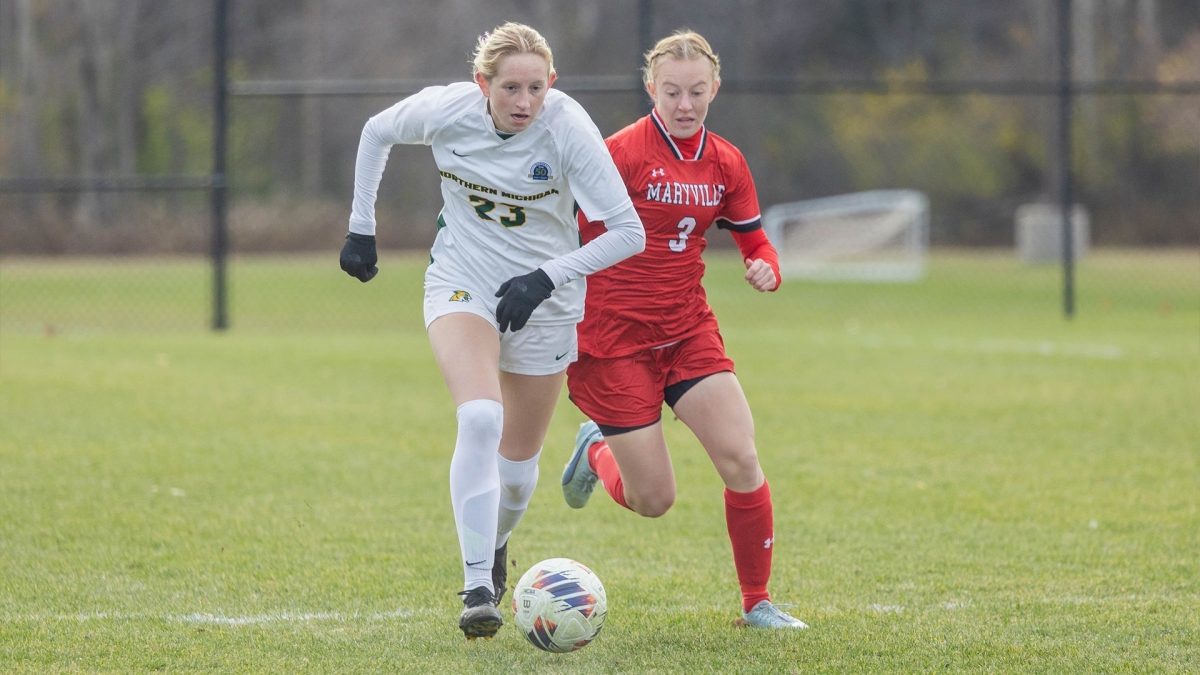Pictured Rocks National Lakeshore is characterized by the towering sandstone cliffs that rise above the Lake Superior shoreline. With natural attractions, the park also offers an accessible and affordable travel destination for Northern Michigan students. Just an hour-long drive from Marquette, the park –– that does not charge a park entrance fee –– offers scenic areas, short day hikes, campgrounds and backcountry camping trails.
The park’s scenery, affordability and proximity to NMU draw students to Pictured Rocks.
“It was cheap, convenient and close,” said NMU junior and environment science major, Ginger Wojciechowski, who visited the park last summer. “It’s one of the more beautiful areas of Michigan.”
The 73,000-acre park spans 42 miles along Lake Superior from Munising to Grand Marais. Visitors to the park have a variety of options, from day hikes to multi-day backpacking trips.
“You can spend just an afternoon here and get an idea of what the pictured rocks are about,” said national park official Brenda St. Martin. If time is a factor, she recommends beginning in Munising at the Pictured Rocks cliffs. “The rest of the park is beautiful, but if you only have a little bit of time, you probably go to Miners Castle,” she said.
Miners Castle is the most famous and identifiable rock formation in the park, and it is the one place visitors can go directly to see the pictured rocks. Erosion has given the nine-story-high sandstone cliff a unique shape, prompting its name. A viewing platform gives visitors an elevated view of the formation and a short path leads to the top of the rock cliff.
The waterfalls and dunes within the park are also easily accessible.
“Those are all easy to get to –– short hikes –– and they are must-sees if you really want to see the park,” says Autumn Jauck, a Hiawatha National Forest official at the Interagency Visitor Center in Munising.
The park is home to seven waterfalls. Most of the falls are accessible by short hikes from a parking area, making them favorite stops for both day visitors and those spending more time in the park said Jauck. Munising Falls and Miners Falls in the western half of the park are particularly impressive. Both waterfalls drop water over 50 feet, carving away the rocks below and showering the area with a thin mist.
The Log Slide dune, near Grand Marais, which acquired its name from a chute constructed on the dune to transport logs to the beach below during the region’s logging heyday, is another popular day-trip location said Jauck. Logging no longer occurs there and the chute has been removed, but visitors flock to the site to climb down the giant sand dune to the beach 300 feet below.
Over 90 miles of hiking trails within the park provide plenty of options for those looking for longer day hikes. Stopping at the Interagency Visitor Center in Munising or the Grand Sable Visitor Center near Grand Marais, students can pick up detailed trail maps and ask for trail recommendations from the knowledgeable staff.
The 10-mile Chapel Loop Trail, approximately 19 miles east of Munising, is popular with hikers wanting to move beyond the shorter, more crowded trails. The loop follows the shoreline of Lake Superior between Mosquito Beach and Chapel Beach and moves inland with highlights such as Chapel Falls and Chapel Lake.
“It’s a must-see day hike for people that really want to do some hiking,” says Jauck.
The Lakeshore Trail runs the 42-mile expanse of the park from Munising to Grand Marais. The trail is part of the North Country National Scenic Trail which extends through seven states from North Dakota to New York. Many backpackers choose to hike some portion of the trail on trips into the backcountry.
Students with more time can get a better view of Pictured Rocks by camping.
“People who backpack and camp through it are getting a more intimate view of the park than someone who is just visiting for the day,” said Jauck.
The park has three campgrounds, each with its own specific features. The smallest, with only eight sites, is Little Beaver Lake, tucked next to a secluded inland lake 20 miles northeast of Munising. The quiet location is popular with campers who bring a canoe or kayak to use on the lake. Twelvemile Beach Campground, 15 miles west of Grand Marais, sits on a sandy plateau with views of Lake Superior. Twelve miles west of Grand Marais, the sites at the third campground, Hurricane River, are divided into two loops and the densely wooded area provides privacy from other campers. Campsites in the park are filled on a first-come, first-served basis, with fees ranging from $14 to $16 a night.
Backcountry camping is even more affordable. Backcountry permits are available at the Interagency Visitor Center or the Grand Sable Visitor Center the day of a trip or the day prior, and cost $5 per person per day. Backpackers have the freedom to navigate the park’s extensive trail system but must stay in one of the 13 designated backcountry camping areas.
Students planning a summer trip to the park should consider two factors: insects and tourists.
“Black flies reach a peak in mid-May,” said St. Martin. “If insects bother somebody, come before that.”
Several hundred thousand tourists people visit the park each year, although most come in mid-summer when the temperatures are the warmest and the black flies begin to decrease. July and August are the busiest months.
The park is large enough to always find a quiet trail or peaceful scenic spot, but during the height of the tourist season students may find the prominent attractions crowded and prime camping spots already taken.
But no matter when students choose to go or how long they decide to spend in Pictured Rocks, the park is likely to provide a unique experience.
“There is nothing else like the Pictured Rocks anywhere else on Lake Superior or on the Great Lakes,” said St. Martin.
For more information on Pictured Rocks National Lakeshore, call 906-387-3700 or, visit http://www.nps.gov/piro/index.htm.























